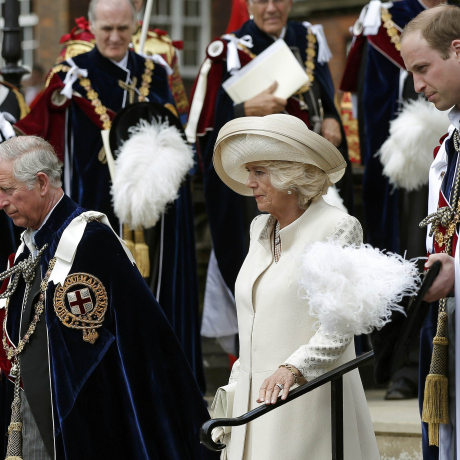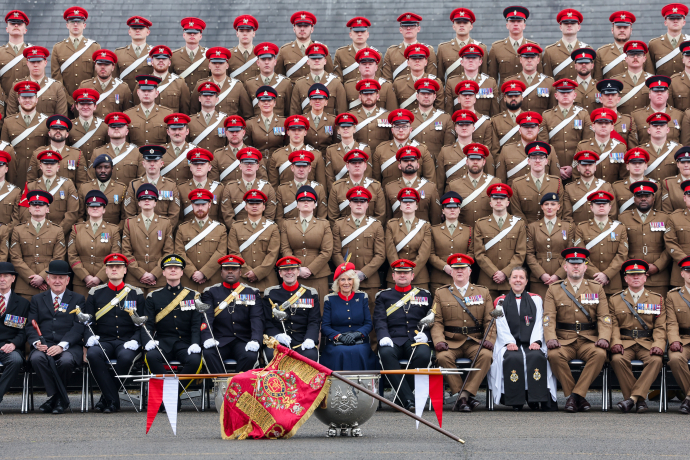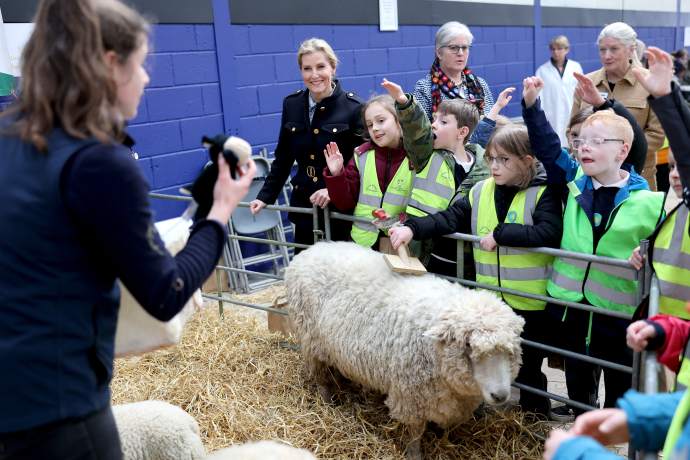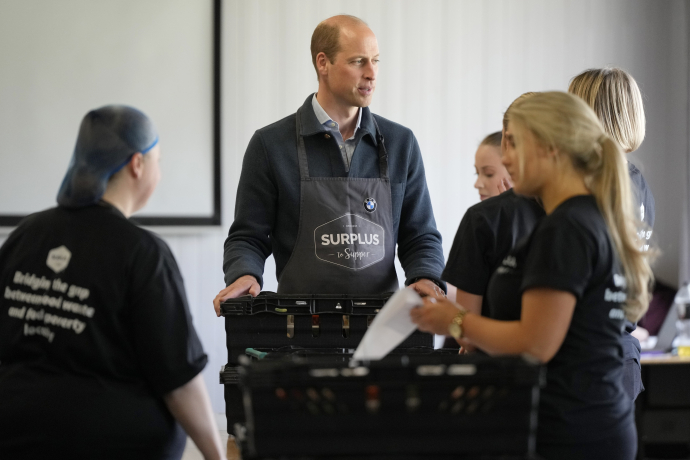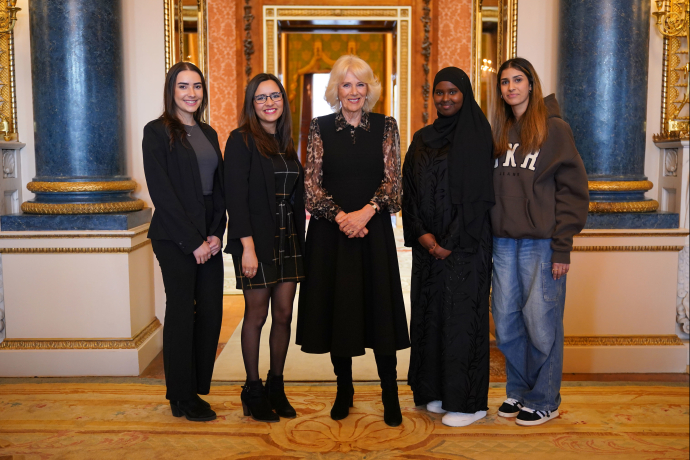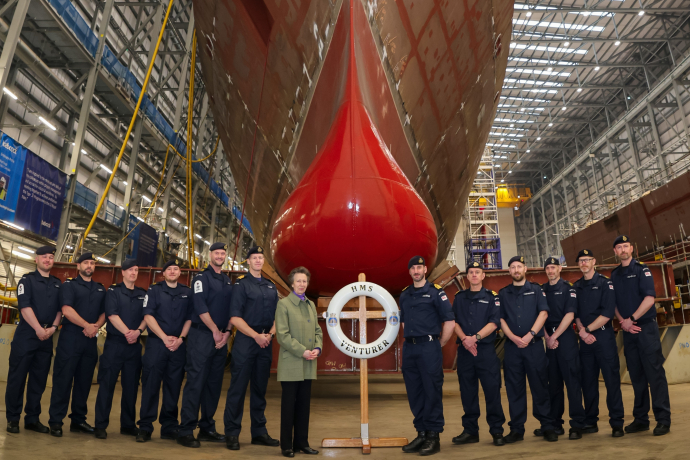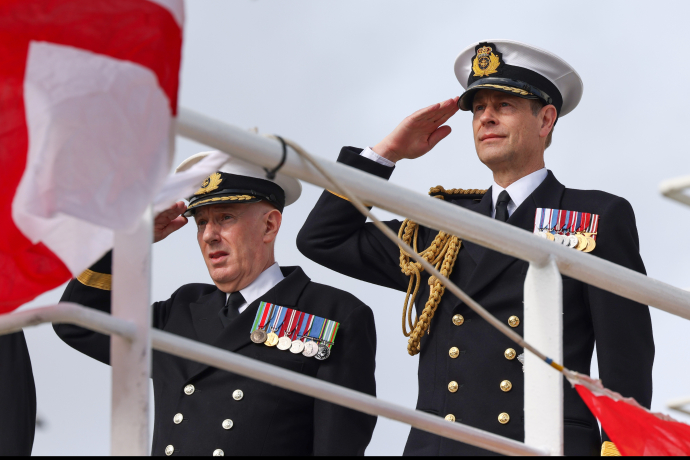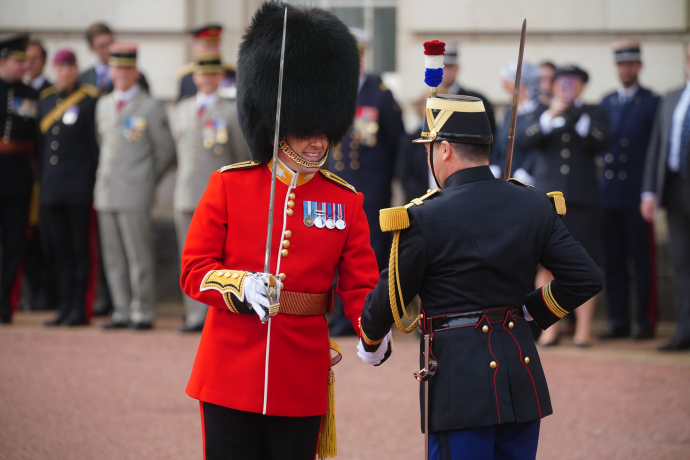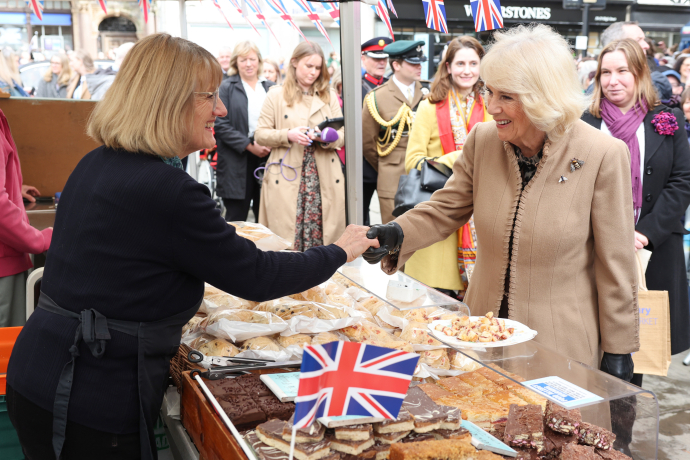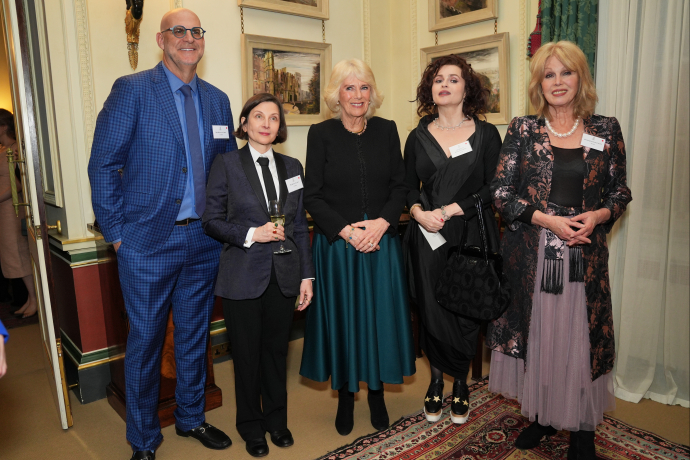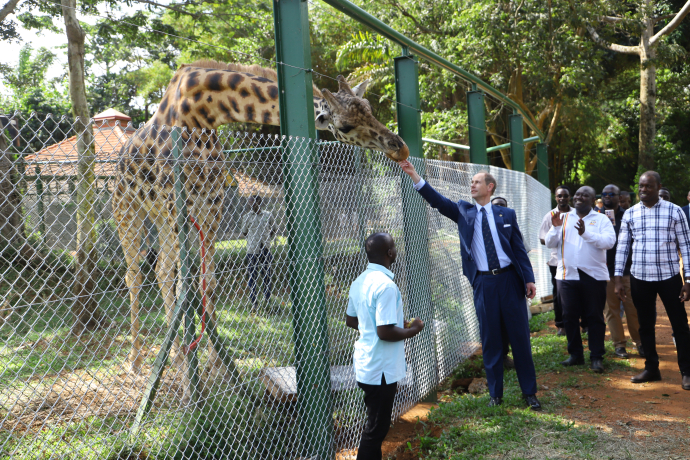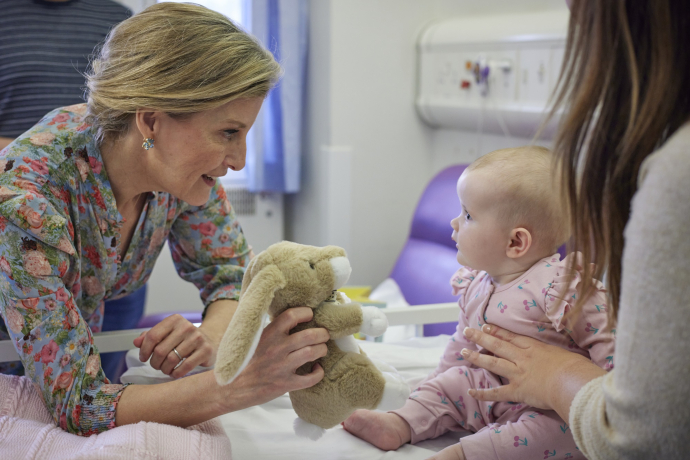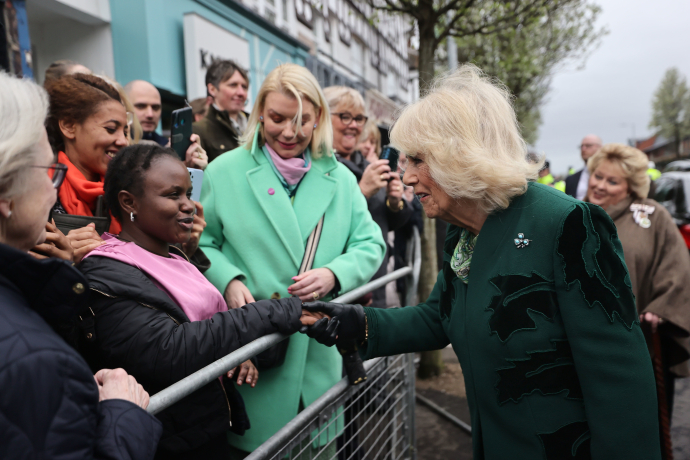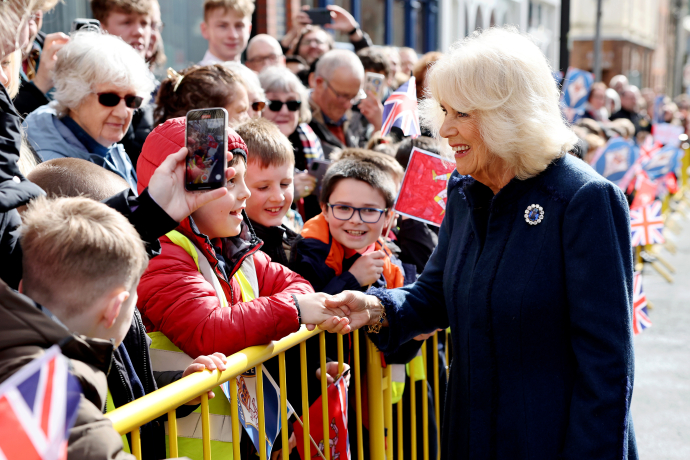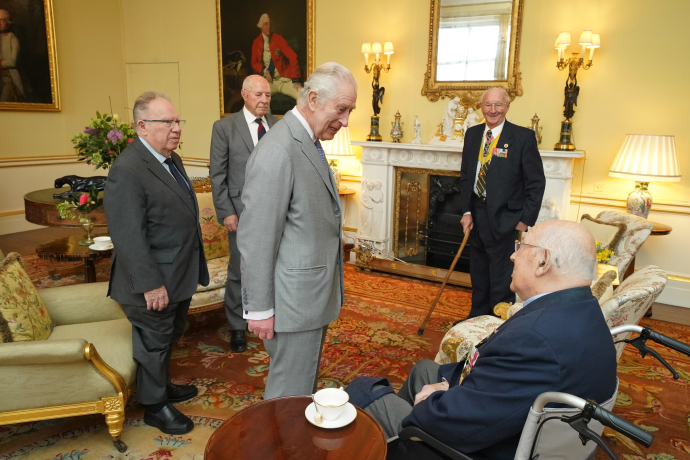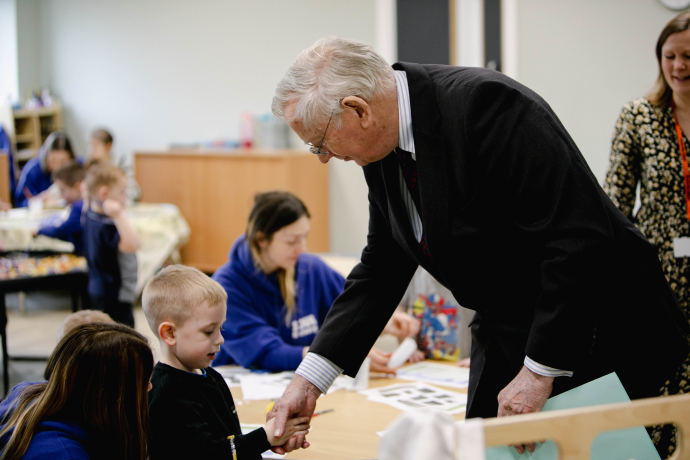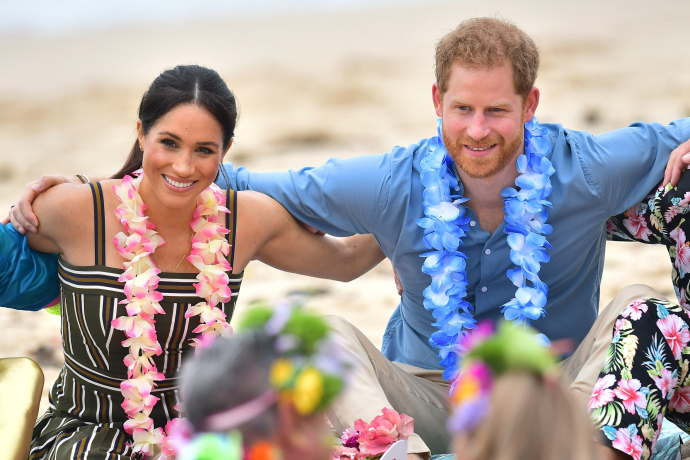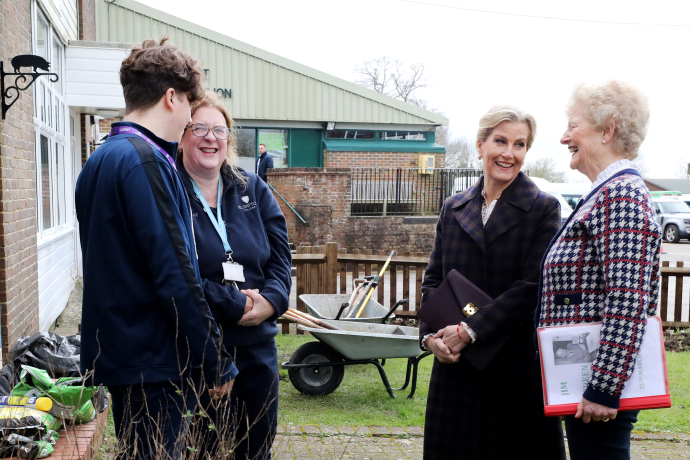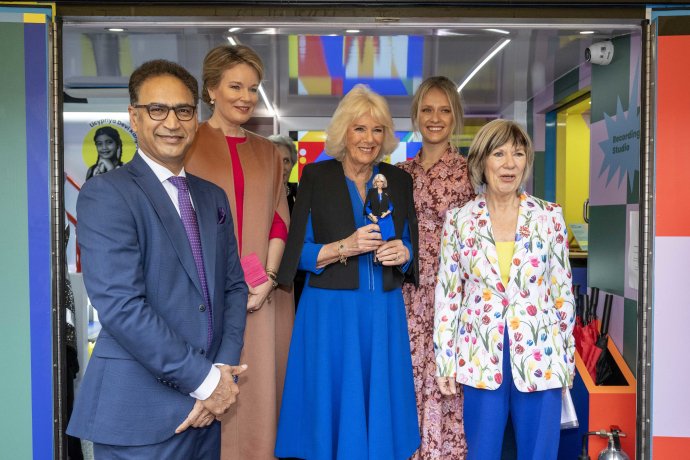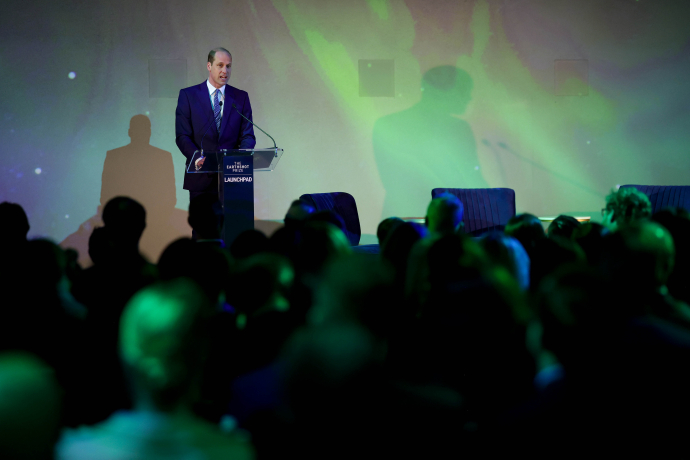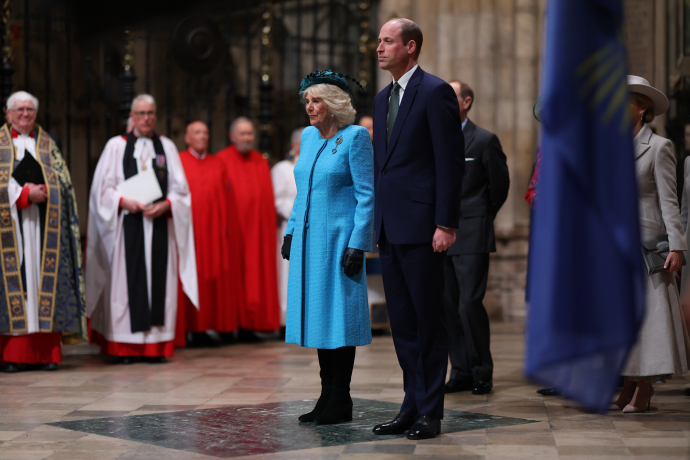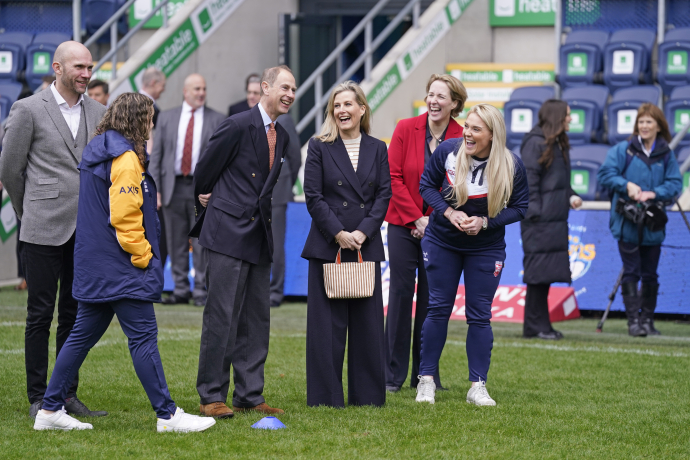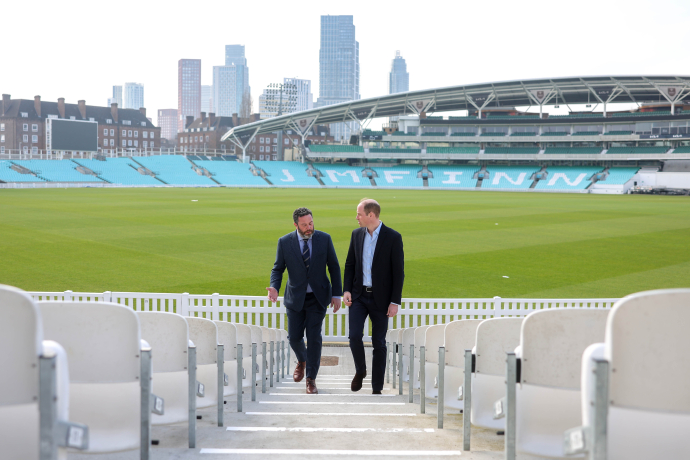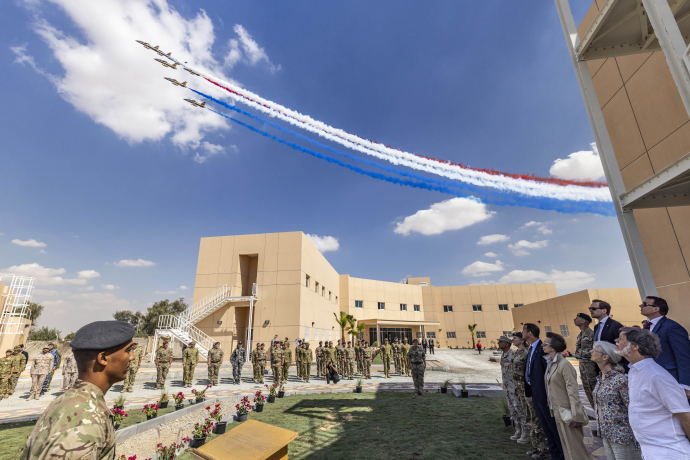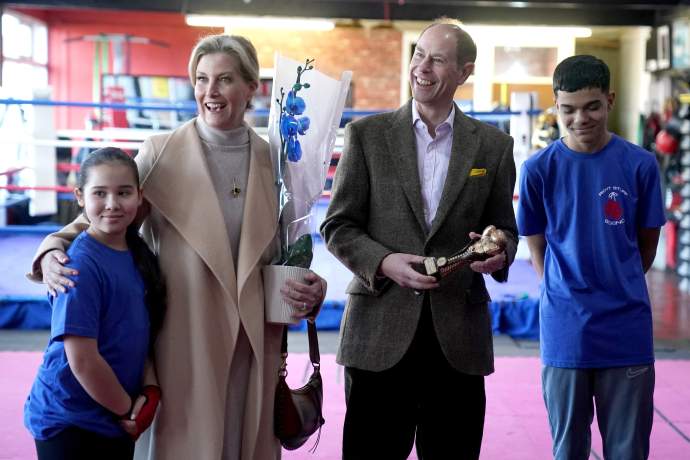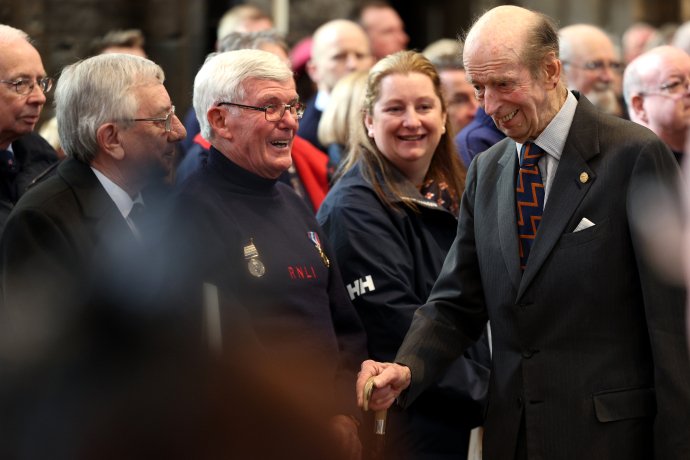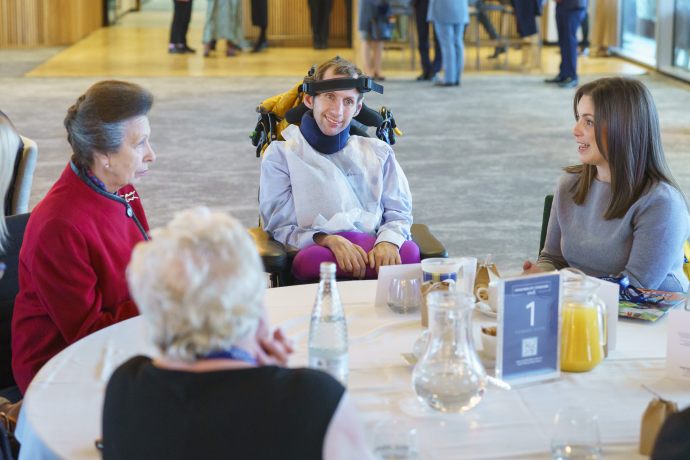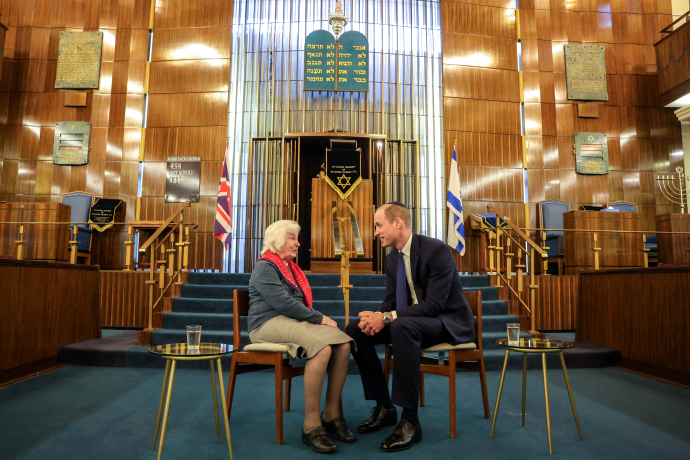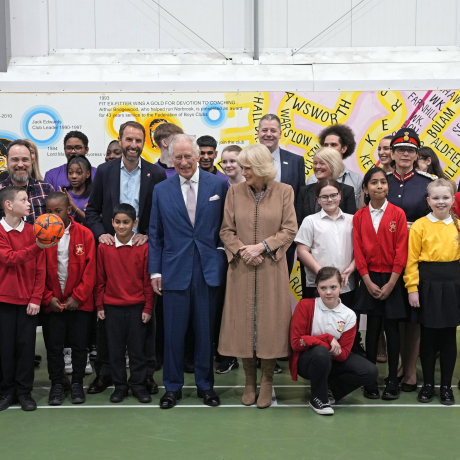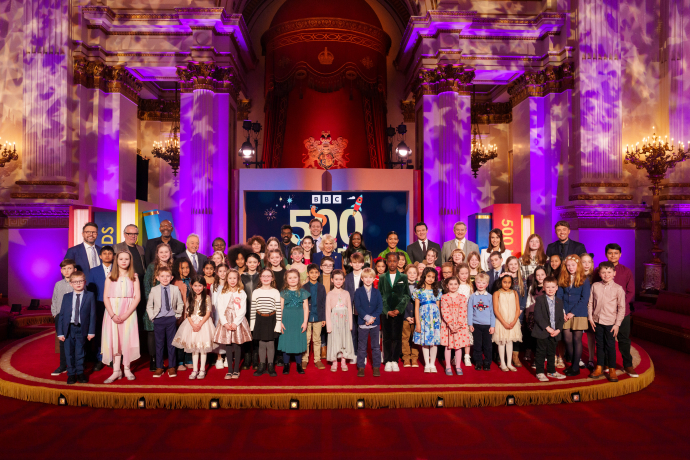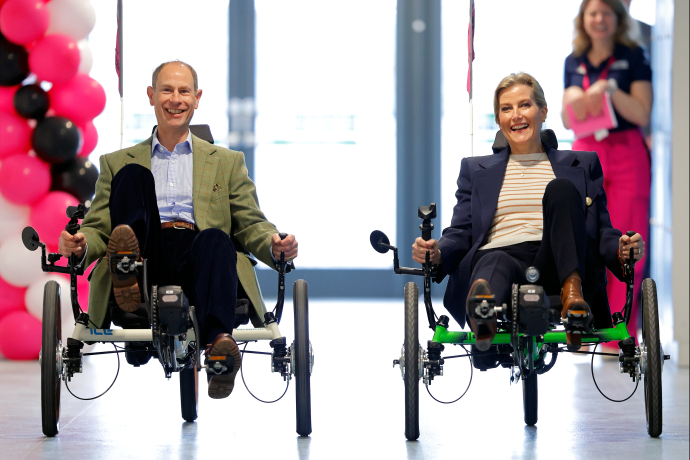The Prince of Wales
His Royal Highness is the 21st to hold the title of The Prince of Wales.
As Prince of Wales, His Royal Highness holds a number of titles. The use of these titles and the heraldry associated with them is governed by various rules.
The Prince is strongly identified with his badge The Prince of Wales’s Feathers, the use of which dates back to the 14th Century and the time of Edward, The Black Prince.
The Prince is also one of three members of the Royal Family able to grant Royal Warrants of appointment to companies. The company is then entitled to display The Prince of Wales’s Feathers on their products.
In addition to the feathers, The Prince has a coat of arms with long historical links with the heraldry of his ancestors.
The Prince also has three standards: his Personal Standard, Standard for Scotland and his Standard for Wales. They are used depending on where His Royal Highness is visiting the United Kingdom. In 2011 The Prince of Wales, along with his son The Duke of Cambridge and The Queen were awarded the honour of new Standards for Canada. These were designed by the Canadian Government to further strengthen the links between Canada and the Crown.
In addition to the title The Prince of Wales, His Royal Highness holds a number of other titles. Some are used depending on where he is in the country such as The Duke of Rothesay when he is in Scotland, and The Duke of Cornwall when he is visiting the South West of England.
Other titles have been inherited in the same way but are not actively used, such as the Earl of Carrick.
Prince of Wales's Feathers
The badge of The Prince of Wales comprises three silver (or white) feathers rising through a gold coronet of alternate crosses and fleur-de-lys. The motto "Ich Dien" (I serve) is on a dark blue ribbon beneath the coronet.

Its use in royal heraldry goes back to the time of Edward Prince of Wales (the Black Prince) in the 14th Century.
Experts in heraldry believe the three ostrich feather badge and Ich Dien motto may have been adopted by the then Prince of Wales (the Black Prince) following the Battle of Crecy in 1346 having been used by the defeated King John of Bohemia, but feathers also formed part of the Arms of the family of Edward's mother, Philippa of Hainault.
The rules of heraldry allow limited variations in the depiction of the badge. The spines or quills of the feathers can be of gold, instead of white or silver, and the coronet - usually studded with emeralds and rubies - can also feature small sapphires.
The arrangement of the motto ribbon can vary, but is usually shown in front of the two outer feathers and behind the centre one.

Coat of Arms
The Prince of Wales’s coat of arms has long historical links with the heraldry of his ancestors. The main shield is the Royal Arms of the United Kingdom. It has been used in this form since the reign of Queen Victoria.

In the first and fourth quarters of the shield are the three gold lions on a red field of the Sovereigns of England.
The second quarter of the shield contains Scotland’s red lion rampant on gold. In the third is the golden harp of Ireland on a blue field.
The shield is marked with a white label to show that it is borne by the eldest son of the Sovereign during the latter’s lifetime.
There is a smaller shield within the larger shield which represents the shield of arms of the original native princes of Gwynedd, with quarters of gold and red with four counter-coloured lions.
This shield is surmounted by the coronet of the Heir Apparent. In heraldry this is depicted in the same way as the crown of the Sovereign except that it has one arch instead of two.
Surrounding the whole is the blue buckled garter of the Most Noble Order of the Garter which bears in gold letters the motto, ‘Honi soit qui mal y pense’ which means ‘Shame upon him who thinks evil of it’ in Old French.
On top of the shield the royal crest, a gold lion crowned with The Prince’s coronet and a white label about its neck, stands upon a larger coronet.
This in turn sits upon the Royal Helm from both sides of which flow the gold and ermine mantling of the royal family.
On either side, standing on gold scrollwork, are the royal supporters, the Lion and the Unicorn; both have a white label around their necks to again signify the eldest son of the Sovereign.
Beneath them in the centre is the shield of arms of the Duchy of Cornwall surmounted by his coronet.
On the left is the badge of The Prince of Wales, the three ostrich feathers encircled by a gold coronet, and on the right is the royal badge of the Red Dragon of Wales.
Around its neck there is also a white label, to distinguish it from that of the Sovereign.
Under the achievement is a scroll bearing the motto of The Prince of Wales ‘Ich dien’, which means ‘I serve’.
Standards
The Prince of Wales has three standards or banners in the United Kingdom - his Personal Standard, his Standard for Wales and his Standard for Scotland. HRH has a personal Canadian Standard which is flown when he is in Canada. Rules govern their use.
The Prince of Wales’s Personal Standard is the same as the Standard used by previous Princes of Wales. The banner includes the Royal Arms, the Coronet of the Heir Apparent and the Arms of the Principality of Wales.
In 1969, the year of His Royal Highness’s Investiture as Prince of Wales, Her Majesty The Queen approved the suggestion that he should have two versions one of Royal Standard Proportions (a breadth of two to a depth of one) and the other of heraldic (squarer) proportions. The two sizes are used as convenient.
A car-standard size was also approved, and first used on 7th July 1969, when The Prince arrived in Malta for a holiday. Car pennants are not always used, and rarely in the Greater London area.
The full-standard size was first flown in March 1970 during His Royal Highness’s visit to New Zealand and Australia with The Queen, The Duke of Edinburgh and Princess Anne.
The Duke of Edinburgh suggested in 1962 that The Prince of Wales should have his own flag to use after his investiture exclusively for use during visits to Wales and in Welsh waters. The Queen gave her approval. The standard, devised by the College of Arms, is based on the Arms of the Principality of Wales, also known as the Arms of Llywelyn ap Gruffydd, the last native Prince of Wales.
The flag was flown for the first time on 11th June 1969 at Castle Green, Cardiff, three weeks before The Prince's Investiture, for the inauguration of the Royal Regiment of Wales. During the Investiture ceremony on 1st July 1969, the Standard for Wales was flown from Caernarfon Castle's Eagle Tower. The standard is also known as The Prince of Wales's Personal Flag for use in Wales.

The Prince of Wales had the idea of incorporating his Scottish titles - Duke of Rothesay, Lord of the Isles and Great Steward of Scotland - into a banner. It was designed in 1974 by Sir Iain Moncrieffe in his capacity as Albany Herald and approved by The Queen later that year.
The standard, exclusively for use when The Prince is in Scotland, was first flown on 21st July 1976, when he visited Loch Kishorn, Wester Ross, to launch the Ninian Central oil platform production dock, the site of which was part of the ancient lordship of the Isles. The standard is also known as His Royal Highness's Scottish Banner.
The first and fourth quarterings of the banner - blue and white chequered band across a gold background - represent the Great Steward of Scotland. The second and third quarterings - a black galley with red flags on a white background - represent the Lord of the Isles. Superimposed in the centre is a small gold shield with the red Lion Rampant within a red Royal Tressure on it, charged with a blue label of 3 points. This represents the Dukedom of Rothesay.

The rules for using the standards provide that The Prince of Wales's Personal Standard may be used on appropriate occasions, except when he is visiting Scotland or Wales, where the special standards are used, or the Duchy of Cornwall - which has its own standard. But when The Prince is visiting any unit, station or ship of the Armed Forces, his Personal Standard is flown even if the visit is within Wales or Scotland.

Traditionally, The Prince of Wales's Standard is never flown at any of The Queen's official residences, except twice a year when His Royal Highness visits Sandringham in Her Majesty's absence. It is not flown during a private visit.
Previous Princes of Wales
The Prince of Wales's Standard for Wales, the personal flag His Royal Highness uses during visits to the Principality, is based on the Arms of Llywelyn ap Gruffydd, the last native Prince of Wales.
Llywelyn the Last (1248-82) had declared himself Prince of Wales in 1258 as he tried to regain territories surrendered to the English after the death of Llywelyn the Great (1194-1240).
The title was recreated in 1301 for Edward of Caernarfon, the future Edward II. It was the first time the eldest son of the King of England was invested as Prince of Wales, making Edward II the first of the current line of Princes of Wales, of which His Royal Highness is the 21st.
Edward was born at Caernarfon in North Wales (where the Investiture of The Prince of Wales took place in 1969), but was in Lincoln when he was given the title in 1301 at the age of 16. He acceded as Edward II on 8th June 1307.
Edward did not pass his Welsh title to his son, Edward III. But his grandson, another Edward, the Black Prince, was created Prince of Wales at the age of 12 in 1343 at Westminster. Since then the title has been held by the eldest surviving son of most kings and queens of England.
There is no automatic succession to the title, and a male Heir Apparent has to be created Prince of Wales by the Sovereign. The title becomes merged in the Crown and is renewed only at the Sovereign's pleasure.
Six Princes of Wales died before they became king, including Prince Arthur, eldest son of Henry VII and Elizabeth of York. He was created Prince of Wales at the age of three in November 1489, and invested in February 1490 at Westminster. Prince Arthur died in 1502, and the title went to his brother, later to become Henry VIII.
Prince Henry, eldest son of James I and Anne of Denmark, was 16 when he was created Prince of Wales in June 1610 at Westminster. He died in November 1612 - and was succeeded as Prince of Wales by his brother, the future Charles I.
Prince Frederick, eldest son of George II and Queen Caroline, was created Prince of Wales in 1729, but died before his father. His son, the future George III, became Prince of Wales when he was 12.
Queen Victoria created her first son Prince of Wales in December 1841, four weeks after he was born; he had to wait until January 1901 before becoming King Edward VII.
Less than 10 months later, in November 1901, the future King George V was created Prince of Wales - at the age of 36. Prince Edward, son of King George V and Queen Mary, was created Prince of Wales on his 16th birthday, on 23rd June 1910.
He was invested on 13th July 1911, at Caernarfon Castle. Edward became King Edward VIII on 20th January 1936. On his abdication, on 10th December 1936, the throne passed to his brother, King George VI - grandfather of the present Prince of Wales.
Princes of Wales since 1301
- Edward (son of Edward I and Eleanor of Castile)
Created Prince of Wales on 1st February 1301, aged 16, in Lincoln. Acceded as Edward II on 8th June 1307
- Edward (son of Edward III and Philippa of Hainault)
Created Prince of Wales on 12th May 1343, aged 12, at Westminster
Died on 8th June 1376
- Richard (son of Edward, Prince of Wales and Joan of Kent)
Created Prince of Wales on 20th November 1376, aged nine, at Havering
Acceded as Richard II on 22nd June 1377
- Henry (son of Henry IV and Mary de Bohun)
Created Prince of Wales on 15th October 1399, aged 12, at Westminster
Acceded as Henry V on 20th March 1413
- Edward (son of Henry VI and Margaret of Anjou)
Created Prince of Wales on 15th March 1454, aged five months
Invested on 9th June 1454, at Windsor
Died on 4th May 1471
- Edward (son of Edward IV and Elizabeth Woodville)
Created Prince of Wales on 26th June 1471, aged seven months, at Westminster
Acceded as Edward V on 9th April 1483
- Edward (son of Richard III and Anne of Warwick)
Created Prince of Wales on 24th August 1483, aged 10
Invested on 8th September at York Minster
Died on 9th April 1484
- Arthur (eldest son of Henry VII and Elizabeth of York)
Created Prince of Wales on 29th November 1489, aged three
Invested on 27th February 1490, at Westminster
Died on 2nd April 1502
- Henry (second son of Henry VII and Elizabeth of York)
Created Prince of Wales on 18th February 1504, aged 12, at Westminster
Acceded as Henry VIII on 22nd April 1509
- Henry (eldest son of James I and Anne of Denmark)
Created Prince of Wales on 4th June 1610, aged 16, at Westminster
Died on 6th November 1612
- Charles (second son of James I and Anne of Denmark)
Created Prince of Wales on 4th November 1616, aged 15, at Whitehall
Acceded as Charles I on 27th March 1625
- Charles (son of Charles I and Henrietta Maria of France)
Declared Prince of Wales c. 1638-41, in London, aged c.8-11
Acceded as Charles II on 30th January 1649
- James (son of James II and Mary of Modena)
Created Prince of Wales c. 4th July 1688, aged three weeks, at St James's
Forfeited title when James II was declared to have abdicated, on 11th December 1688
- George (son of George I and Sophie Dorothea of Brunswick-Luneburg and Celle)
Created Prince of Wales on 27th September 1714, aged 30, at Westminster
Acceded as George II on 11th June 1727
- Frederick (son of George II and Caroline of Brandenburg-Anspach)
Created Prince of Wales on 8th January 1729, aged 21, in London
Died on 20th March 1751
- George (son of Frederick, Prince of Wales and Augusta of Saxe-Gotha)
Created Prince of Wales on 20th April 1751, aged 12, in London
Acceded as George III on 25th October 1760
- George (son of George III and Charlotte of Mecklenburg-Strelitz)
Created Prince of Wales on 19th August 1762, aged one week, in London
Acceded as George IV on 29th January 1820
- Albert Edward (son of Queen Victoria and Prince Albert)
Created Prince of Wales on 8th December 1841, aged four weeks, in London
Acceded as King Edward VII on 22nd January 1901
- George (son of King Edward VII and Queen Alexandra)
Created Prince of Wales on 9th November 1901, aged 36, in London
Acceded as King George V on 6th May 1910
- Edward (son of King George V and Queen Mary)
Created Prince of Wales on 23rd June 1910, aged 16. Invested on 13th July 1911, at Caernarfon Castle
Acceded as King Edward VIII on 20th January 1936
- Charles (son of Queen Elizabeth II and The Duke of Edinburgh)
Created Prince of Wales on 26th July 1958, aged nine; invested on 1st July 1969, at Caernarfon Castle.
Titles
His Royal Highness Prince Charles Philip Arthur George, Prince of Wales, Duke of Cornwall, Duke of Rothesay, Duke of Edinburgh, Earl of Chester, Earl of Carrick, Earl of Merioneth, Baron of Renfrew, Baron Greenwich, Lord of the Isles and Great Steward of Scotland, KG, KT, GCB, OM, AK, QSO, CC, PC, ADC.
His Royal Highness
King George VI had granted letters patent under the Great Seal of the Realm on 22nd October 1948, declaring that children of the marriage of HRH Princess Elizabeth, Duchess of Edinburgh, and HRH Prince Philip, Duke of Edinburgh, should "have and at all times hold and enjoy the style, title or attribute of Royal Highness and the titular dignity of Prince or Princess prefixed to their respective Christian names in addition to any other appellations and titles and honour which may belong to them hereafter". The announcement was made on 9th November, five days before The Prince was born. Under rules proclaimed by King George V on 17th July 1917, the royal style and title had been restricted to the Sovereign's children and to the children of the Sovereign's sons, which would have excluded any children of the then Princess Elizabeth.
The Prince of Wales
The Prince of Wales is a title created for the male heir to The British Throne. There is no automatic succession to this title, but it is normally passed on when the existing Prince of Wales accedes to the throne. The title becomes merged in the Crown and is renewed only by the Sovereign's pleasure. The Queen created Prince Charles The Prince of Wales on 26th July 1958. The Prince can trace his descent through the Tudors to the original native Princes of Wales, though the title's use for the Heir to the English Throne began with Edward II, who had been created Prince of Wales by his father Edward I in 1301.
Duke of Cornwall
The Prince became Duke of Cornwall automatically upon The Queen's accession on 6th February 1952. The Duchy of Cornwall - the oldest and one of the biggest landed estates in England - has existed for more than 650 years and provides an income for the male Heir to The Throne.
Duke of Rothesay
When The Prince of Wales is in Scotland, he is known by this title of the Scottish peerage, first conferred by Robert III, King of Scots, on his son David in 1398. An act of the Scottish Parliament in 1469 confirmed its restriction to the Heir Apparent to the throne of Scotland. Since the 1603 Union of the Crowns the title has descended alongside the Dukedom of Cornwall, and The Prince became Duke of Rothesay at the time of The Queen's accession.
Earl of Carrick and Baron of Renfrew
Other titles of the Scottish peerage inherited by the Heir to The Throne under the 1469 Act.
Earl of Chester
The Earldom was created by William the Conqueror, with the intention of the Earl keeping an eye on any war-like activities by the Welsh. It reverted to the Crown in 1237, and was passed to the future Edward I. He conferred the Earldom on his son, Edward II, and since then the Earldom of Chester has gone to every Prince of Wales.
Lord of The Isles
This ancient title, held by those who ruled the Western Isles as vassals of the King of Scotland, was annexed to the Crown by James V of Scotland in 1540, to be passed to his heirs.
Prince and Great Steward of Scotland
The hereditary office of Great (or High) Steward dates from the 12th Century. The 1469 Act confirmed that the title should go to "the first-born prince of the King of Scots for ever".
Knight of the Garter (KG)
The Most Noble Order of the Garter, founded by Edward III in 1348, is the senior British Order of Chivalry. The Prince of Wales automatically became a KG when he became Prince of Wales in 1958, but was not installed until 17th June 1968, at Windsor Castle.
Knight of the Thistle (KT)
The Most Ancient and Most Noble Order of the Thistle is Scotland's highest honour and is second in precedence to the Garter. Its origins are uncertain, but its legendary status was recognised when it was revived in 1687 by James II (James VII of Scotland). The Prince is among current royal Knights and Ladies of the Thistle - under his title as Duke of Rothesay; he was installed in 1977.
Knight Grand Cross of the Order of the Bath (GCB)
The Most Honourable Order of the Bath is the premier meritorious Order of the Crown, mainly given to officers of the armed services together with a small number of civil servants. It was founded by George I in 1725. The Prince was installed as Great Master on 28th May 1975.
Order of Merit (OM)
This is a relatively modern Order, and is one of the most coveted of British distinctions. The Order is restricted to 24 members (as well as additional foreign recipients). As with the Royal Victorian Order, the Order of Merit is in the sole gift of the Sovereign but carries no rank apart from the initials OM after the name. The Prince of Wales was awarded the Order of Merit on 26th June 2002.
Knight of the Order of Australia (AK)
The Order was instituted by The Queen in 1975 on the advice of her Australian ministers, and The Prince was installed in 1981.
Companion of the Queen's Service Order (QSO)
The Order was instituted by The Queen in 1975 on the advice of her New Zealand ministers, and The Prince was installed in 1983.
Order of Canada (CC)
The Order of Canada was instituted by The Queen in 1967 on the advice of her Canadian ministers, to mark the Centenary of the Canadian Confederation, The Prince was installed as an Extraordinary Companion in 2017.
Privy Counsellor (PC)
References to a Privy Council of senior advisers to the Sovereign date back to the 14th century, though such advisers had been close to kings long before that. Today Privy Counsellors include all members of the Cabinet, other senior ministers, leaders of opposition parties, Lords Justice of Appeal, and the Archbishops of Canterbury and York. Some members are also drawn from the Commonwealth. The appointment is for life, but under modern convention only members of the Government are normally summoned to meetings, together with new Privy Counsellors who have to take part in a short ceremony involving swearing an oath of allegiance and kissing of The Queen's hand. Should there be a need for The Privy Council to meet in The Queen's absence, Her Majesty, by Letters Patent, creates senior members of the Royal Family Councillors of State, enabling them to represent her in summoning a Privy Council meeting.
Aide-de-Camp (ADC)
Queen Victoria instituted the appointment of a small group of personal ADCs, an honorary appointment with few duties. The Prince is one of The Queen's personal ADCs. Principal ADC - an office held by some high-ranking officers in the Armed Services - carries duties including attendance on The Queen at the State Opening of Parliament. Other ADCs, rarely asked to perform any duties, are also chosen from the Armed Services.
Royal Warrants
Some 170 regular suppliers of goods and services hold royal warrants of appointment to The Prince of Wales. Granting of tradesmen's warrants by the Royal Family has a history dating back centuries, and took its present form during the reign of Queen Victoria.
Royal warrants of appointment are granted only by The Queen, The Duke of Edinburgh and The Prince of Wales. Her Late Majesty Queen Elizabeth The Queen Mother also granted warrants, but all remaining ran out in 2007, five years after her death.
A warrant allows the company to be styled "By Appointment to HRH The Prince of Wales" and, depending on individual circumstances, to display The Prince of Wales badge of three feathers on premises, delivery vehicles, stationery and advertisements as well as on the products themselves.
Businesses may hold warrants from more than one member of the Royal Family. There are strict regulations, and a warrant holder must observe total discretion about the goods and services supplied under the appointment.
Since 1990, The Prince of Wales has asked companies applying for his Warrant to meet a criteria of environmental and social responsibility. This requirement has also been introduced for Warrants to The Queen and The Duke of Edinburgh.
A royal warrant is generally granted for an initial period of five years, after which the appointment is reviewed. It can, however, be cancelled at any time, and there is always a review if the firm goes bankrupt, there is a change of ownership or if the good or services are no longer used by the Member of the Royal Family.
Applications by companies for a royal warrant are made to the Lord Chamberlain's office, and considered by the Royal Household Tradesmen's Warrants Committee after being put forward by the Royal Warrant Holders Association.

